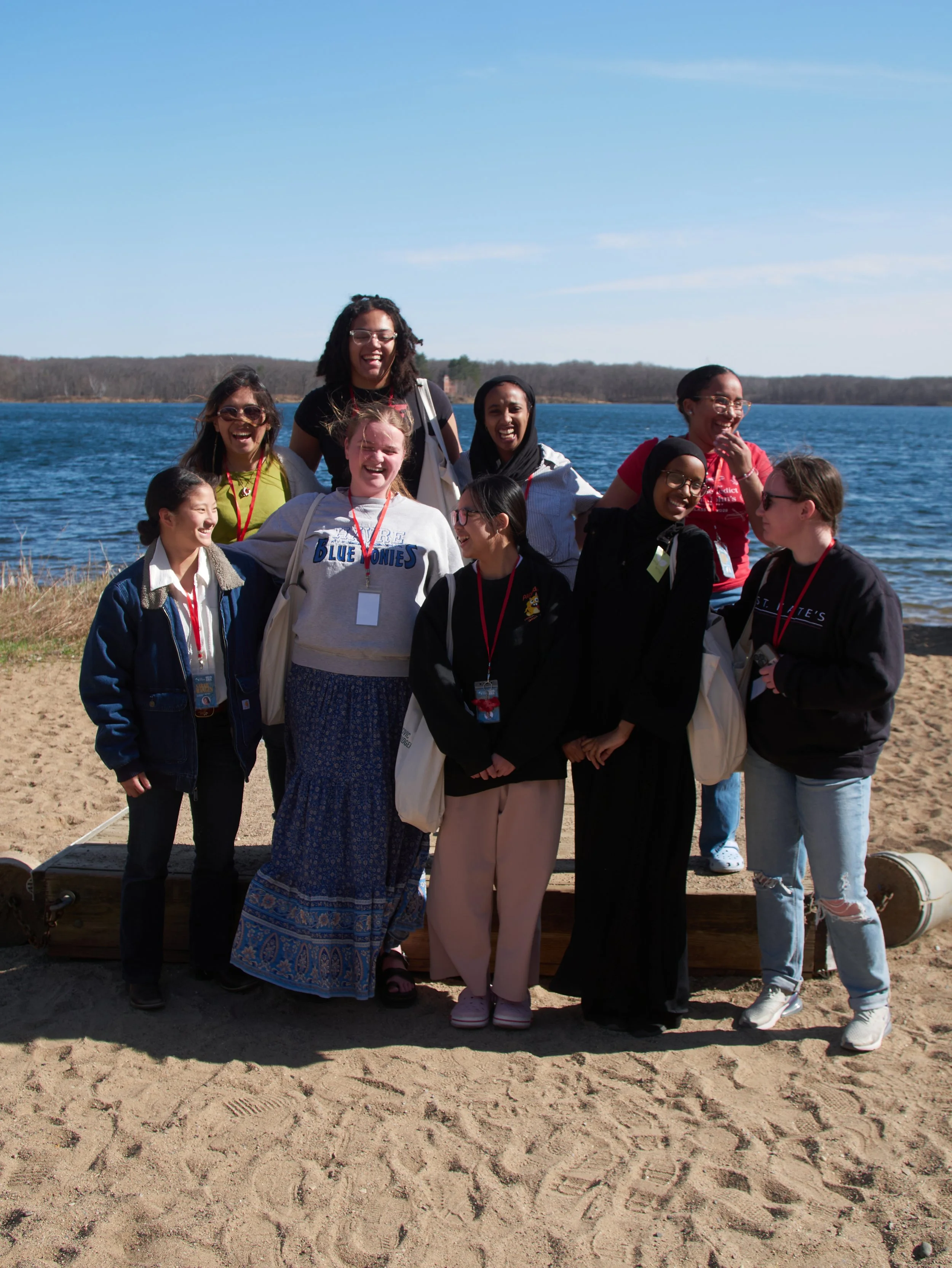Campus Bridging Initiative at St. Ben’s, Day One
Hi, my name is Sumaya. I was a part of the exchange program between Saint Catherine University and Saint Ben’s. As a student from Saint Catherine’s (located in an urban area), traveling to Saint Ben’s in a rural setting was an exciting change of pace. We woke up early, and Sarah, one of the other students, drove us to Saint Ben’s. I tried to study for an exam I had on Monday during the ride, but it was challenging to focus with so many people chatting around me. We arrived a bit late due to traffic and construction, but that’s life, right?
When we got to Saint Ben’s, we were immediately greeted by the campus Bennie (adorable!) and given welcome baskets with gifts. After settling in, we headed to the multicultural center for Session 5: Democracy and Citizenship: Building a Common Future. In this session, we split into three groups to discuss how to foster community through the metaphor of a “community kitchen.”
A community kitchen, as the name suggests, is a space where people come together to cook and share meals collectively. We contrasted this idea with “vending machine democracy,” where people expect immediate, transactional outcomes (you input something and get a specific result). The community kitchen analogy emphasizes collaboration, shared benefits, and collective responsibility. Each group focused on different aspects: envisioning a better community, leveraging local institutions, and empowering neighborhoods. It was fascinating to brainstorm how we could apply these principles in our own lives.
After the session, we had lunch at the “Bennie” dining hall. The all-you-can-eat buffet was a fun contrast to Saint Catherine’s swipe-in/swipe-out system! Later, we took a campus tour and admired Saint Ben’s lush greenery and charming art installations. The relaxed, creative atmosphere stood out to me, especially compared to the city.
At 3 PM, we attended a session on nonviolence, exploring its origins and six core principles. We split into groups to discuss how these principles could address urban-rural divides and polarization. The conversation challenged us to reflect on which principles felt easy to adopt and which required more effort. Asking “why” and “how” questions deepened my understanding—it’s amazing where curiosity can lead!
Around 4:30, we visited the Arboretum to practice interviewing skills, essential for becoming effective “Civic Bridgers.” Though it felt awkward at first, conducting structured interviews in such a serene setting created surprisingly intimate connections. It reminded me how meaningful one-on-one conversations can be, especially outside the hustle of city life.
We ended the day at “The House,” a vibrant community hub where locals gather for food and conversation. Meeting the owner and hearing their story reinforced the power of shared meals and intentional dialogue. Sitting with fellow students, reflecting on the day, and bonding over our experiences felt special—a reminder that Civic Bridging thrives on openness and connection.
Thank you for reading! This exchange has been eye-opening, and I’m excited to join the Civic Bridgers community. If you’re curious about building bridges (metaphorical), I highly recommend getting involved. Have a fantastic day!



